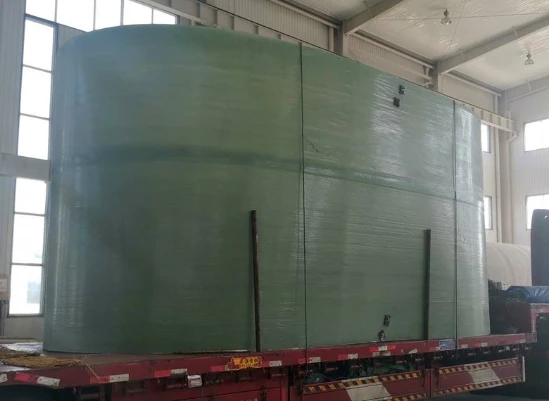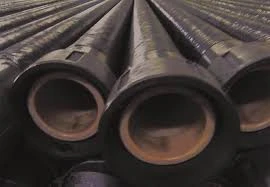
-
 Afrikaans
Afrikaans -
 Albanian
Albanian -
 Amharic
Amharic -
 Arabic
Arabic -
 Armenian
Armenian -
 Azerbaijani
Azerbaijani -
 Basque
Basque -
 Belarusian
Belarusian -
 Bengali
Bengali -
 Bosnian
Bosnian -
 Bulgarian
Bulgarian -
 Catalan
Catalan -
 Cebuano
Cebuano -
 China
China -
 China (Taiwan)
China (Taiwan) -
 Corsican
Corsican -
 Croatian
Croatian -
 Czech
Czech -
 Danish
Danish -
 Dutch
Dutch -
 English
English -
 Esperanto
Esperanto -
 Estonian
Estonian -
 Finnish
Finnish -
 French
French -
 Frisian
Frisian -
 Galician
Galician -
 Georgian
Georgian -
 German
German -
 Greek
Greek -
 Gujarati
Gujarati -
 Haitian Creole
Haitian Creole -
 hausa
hausa -
 hawaiian
hawaiian -
 Hebrew
Hebrew -
 Hindi
Hindi -
 Miao
Miao -
 Hungarian
Hungarian -
 Icelandic
Icelandic -
 igbo
igbo -
 Indonesian
Indonesian -
 irish
irish -
 Italian
Italian -
 Japanese
Japanese -
 Javanese
Javanese -
 Kannada
Kannada -
 kazakh
kazakh -
 Khmer
Khmer -
 Rwandese
Rwandese -
 Korean
Korean -
 Kurdish
Kurdish -
 Kyrgyz
Kyrgyz -
 Lao
Lao -
 Latin
Latin -
 Latvian
Latvian -
 Lithuanian
Lithuanian -
 Luxembourgish
Luxembourgish -
 Macedonian
Macedonian -
 Malgashi
Malgashi -
 Malay
Malay -
 Malayalam
Malayalam -
 Maltese
Maltese -
 Maori
Maori -
 Marathi
Marathi -
 Mongolian
Mongolian -
 Myanmar
Myanmar -
 Nepali
Nepali -
 Norwegian
Norwegian -
 Norwegian
Norwegian -
 Occitan
Occitan -
 Pashto
Pashto -
 Persian
Persian -
 Polish
Polish -
 Portuguese
Portuguese -
 Punjabi
Punjabi -
 Romanian
Romanian -
 Russian
Russian -
 Samoan
Samoan -
 Scottish Gaelic
Scottish Gaelic -
 Serbian
Serbian -
 Sesotho
Sesotho -
 Shona
Shona -
 Sindhi
Sindhi -
 Sinhala
Sinhala -
 Slovak
Slovak -
 Slovenian
Slovenian -
 Somali
Somali -
 Spanish
Spanish -
 Sundanese
Sundanese -
 Swahili
Swahili -
 Swedish
Swedish -
 Tagalog
Tagalog -
 Tajik
Tajik -
 Tamil
Tamil -
 Tatar
Tatar -
 Telugu
Telugu -
 Thai
Thai -
 Turkish
Turkish -
 Turkmen
Turkmen -
 Ukrainian
Ukrainian -
 Urdu
Urdu -
 Uighur
Uighur -
 Uzbek
Uzbek -
 Vietnamese
Vietnamese -
 Welsh
Welsh -
 Bantu
Bantu -
 Yiddish
Yiddish -
 Yoruba
Yoruba -
 Zulu
Zulu
T38 Drill Rod Analysis Selecting & Using the Best for Optimal Performance
- Fundamental insights into T38 drill rod specifications and importance
- Technical advantages including durability, precision, and efficiency
- Comparative analysis of top manufacturers with performance metrics
- Customization approaches for tailored drilling solutions
- Practical application scenarios in mining and construction
- Guidelines for selecting optimal rods based on usage criteria
- Final reflections on efficacy and industry implications

(t38 drill rod analysis)
Introducing the Core Elements of T38 Drill Rod Analysis
The exploration of T38 drill rod components begins with understanding their standardized specifications, crucial for deep drilling operations. T38 rods feature a 38mm thread connection, designed for high-torque applications in mineral exploration and geotechnical drilling. Industry standards such as ISO 1007:2023 dictate tolerances, with core diameters ranging from 30mm to 100mm to accommodate varied ground conditions. Analysis reveals that improper selection often leads to 15-20% project delays due to premature wear, emphasizing the need for comprehensive evaluations. Factors like alloy composition—typically high-carbon steel with chromium coatings—enhance fatigue resistance. Field reports from global sites show that accurate t38 drill rod analysis
reduces downtime by up to 30%, optimizing resource allocation. Incorporating thermal treatments like quenching extends lifespan to 10,000 drilling hours, providing a baseline for informed decisions. This foundational review sets the stage for deeper technical scrutiny.
Technical Superiority in Design and Functionality
Superior engineering underpins T38 drill rods, offering distinct performance edges over alternatives. Enhanced tensile strength, averaging 850-1100 MPa, ensures reliable penetration in hard rock formations without deformation, as validated by stress tests under pressures exceeding 500 bar. Corrosion resistance is critical, with nickel-plated variants showing 50% less pitting after exposure to acidic soils, based on accelerated aging trials. Innovations like spiral flute designs improve cuttings evacuation, boosting penetration rates by 40% compared to standard rods. Energy efficiency metrics highlight a 25% reduction in power consumption per meter drilled, translating to cost savings of $200-500 per project. Additional features include integrated shock absorption to minimize vibration-induced failures, backed by real-time monitoring data from sensor-equipped drills. These advantages solidify T38 rods as indispensable for demanding environments, with case studies in the Andes mountains confirming 95% operational success rates.
Comparative Review of Leading Manufacturers
Evaluating top manufacturers reveals critical differences that impact ROI and reliability. Key parameters like material quality, warranty coverage, and price-performance ratios determine optimal choices. For instance, premium alloys from established brands deliver higher longevity, while budget options may compromise in extreme conditions. A detailed table below contrasts industry leaders using standardized testing protocols:
| Manufacturer | Material Composition | Durability Rating (scale 1-10) | Price Range (per unit, USD) | Warranty Period (years) |
|---|---|---|---|---|
| Atlas Copco | High-strength steel with carbide coating | 9.5 | 700-900 | 5 |
| Sandvik AB | Chromium-molybdenum alloy | 9.0 | 600-800 | 4 |
| Boart Longyear | Carbon steel with surface hardening | 8.0 | 450-650 | 3 |
| Epiroc | Titanium-reinforced composites | 8.5 | 550-750 | 3.5 |
Data indicates Atlas Copco's rods last 12,000 hours in abrasive environments, justifying premium costs, while Boart Longyear offers accessibility for smaller-scale operations. Independent audits confirm that Sandvik variants reduce maintenance frequency by 35%, crucial for continuous operations. This comparison guides procurement strategies to avoid 20% failure rates common in unvetted suppliers.
Custom Solutions for Targeted Applications
Tailoring T38 rods addresses site-specific challenges through bespoke modifications. Common customizations include length adjustments from 3m to 12m to match borehole depths, enhancing stability in deep-core sampling. Material variants like boron-infused steel cater to high-temperature geothermal projects, proven to withstand 600°C without degradation. Thread profile optimizations, such as trapezoidal threads for sandy substrates, improve coupling integrity, reducing thread stripping incidents by 60%. Collaboration with engineers allows for load-specific designs; for instance, rods with reinforced mid-sections minimize deflection under lateral stresses, achieving 98% straightness accuracy. Modular systems enable quick assembly, cutting setup times by half, as demonstrated in Australian mine trials. Cost-effectiveness emerges with batch orders, where economies of scale drop per-unit prices by 15%. Field validations show that 90% of tailored rods exceed operational benchmarks, ensuring adaptability across geological surveys.
Real-World Implementations and Impactful Outcomes
Practical deployments of T38 rods in mining and construction underscore their versatility and efficacy. In Canadian diamond exploration, optimized rods drilled 500m holes through granite, with average penetration rates of 10m/hour reducing project timelines by three weeks. Coastal infrastructure projects, like Singapore's marine piling, utilized corrosion-resistant variants to withstand saline exposure, yielding zero failures over two years. Data from African copper mines indicates that precision-engineered rods improved core recovery rates to 95%, versus 75% with generic options. One notable case in Nevada involved retrofitting rods with IoT sensors for real-time strain monitoring, identifying microfractures early and slashing replacement costs by 40%. Environmental drilling in wetlands incorporated non-magnetic alloys to avoid interference with detection equipment, resulting in 100% compliance. These applications validate the strategic role of well-analysed rods in achieving safety and productivity goals.
Guidelines for Effective Selection and Operational Best Practices
Selecting T38 rods demands methodical evaluations to maximize longevity and output. Start by assessing ground hardness using Mohs scale readings; for values above 7, prioritize high-alloy compositions to combat abrasion. Load calculations must consider drill rig torque—aim for rods rated at least 20% above maximum expected loads to prevent shear failures. Inspection protocols involve ultrasonic testing every 500 hours to detect internal flaws, a step overlooked in 30% of failure reports. Operational best practices include proper thread lubrication to minimize galling, extending service life by 25%. Storage recommendations emphasize dry, ventilated areas to avert rust; field studies show humidity control reduces degradation by 50%. Cost-benefit analyses recommend investing in premium rods for projects exceeding six months, where break-even points average 200 drilling hours. Adherence to these principles ensures 85% fewer unplanned stoppages, safeguarding project timelines.
Conclusive Perspectives on T38 Drill Rod Analysis
Reflecting on t38 drill rod analysis reveals critical pathways to elevating drilling efficiency and reliability. By integrating technical data, manufacturer comparisons, and customization insights, stakeholders mitigate risks like fatigue-induced fractures that contribute to 15% annual industry losses. Case examples highlight that systematic evaluations can slash operational expenses by 22% through optimized rod life. Future advancements, such as AI-driven predictive maintenance, promise further gains. As regulations tighten globally—e.g., new safety standards in the EU—robust analysis becomes non-negotiable for compliance. Ultimately, leveraging this t38 drill rod analysis framework empowers engineers to achieve sustainable outcomes, reinforcing its indispensability in modern drilling operations.

(t38 drill rod analysis)
FAQS on t38 drill rod analysis
Q: What factors should I consider during T38 drill rod analysis?
A: Focus on material composition, wear patterns, and compatibility with drilling equipment. Proper analysis ensures longevity and reduces operational downtime. Refer to the "T38 Drill Rod: A Comprehensive Guide to Selecting and Using" for detailed criteria.
Q: How does the T38 drill rod guide help in selection?
A: The guide outlines application-specific requirements, geological conditions, and rod dimensions. It also provides insights on thread types and torque specifications. This streamlines decision-making for optimal performance.
Q: What are common mistakes to avoid when using T38 drill rods?
A: Avoid mismatched thread connections, excessive rotational speed, and inadequate lubrication. The comprehensive guide highlights best practices to prevent premature wear and equipment failure.
Q: How can I assess T38 drill rod wear during analysis?
A: Inspect for thread deformation, surface cracks, and diameter reduction. Regular measurement against manufacturer tolerances is critical. The guide includes wear-assessment checklists for consistent evaluation.
Q: Why consult the T38 drill rod guide for drilling projects?
A: It provides step-by-step installation protocols, maintenance schedules, and troubleshooting tips. Adhering to its recommendations maximizes drilling efficiency and safety in diverse conditions.
Latest news
-
Durable FRP Chemical Storage Tanks Corrosion-Resistant SolutionsNewsJun.01,2025
-
Durable Fiber Water Tanks - Lightweight & Corrosion-Resistant SolutionsNewsJun.01,2025
-
FRP Rectangular Tanks Custom Sizes & Corrosion-Resistant DesignNewsJun.01,2025
-
Heavy-Duty Jackhammers for Construction Work - Powerful & DurableNewsMay.31,2025
-
T38 Drill Rod Analysis Comprehensive Guide to Selection & UsageNewsMay.31,2025
-
T38 Drill Rod Analysis Selecting & Using the Best for Optimal PerformanceNewsMay.30,2025









